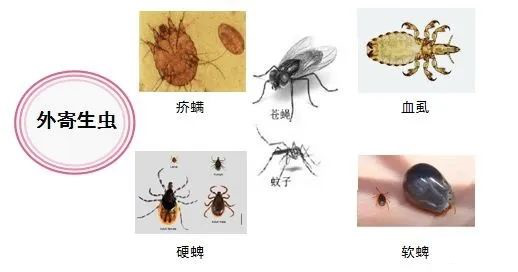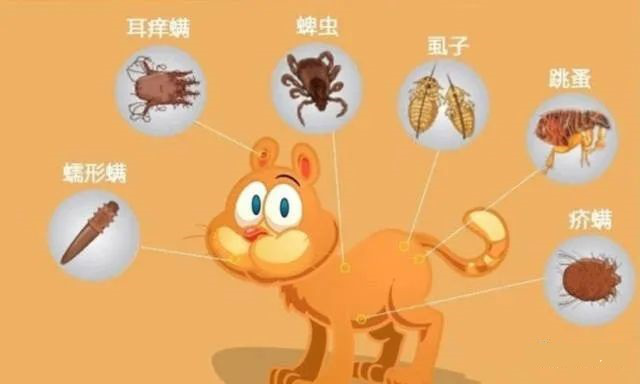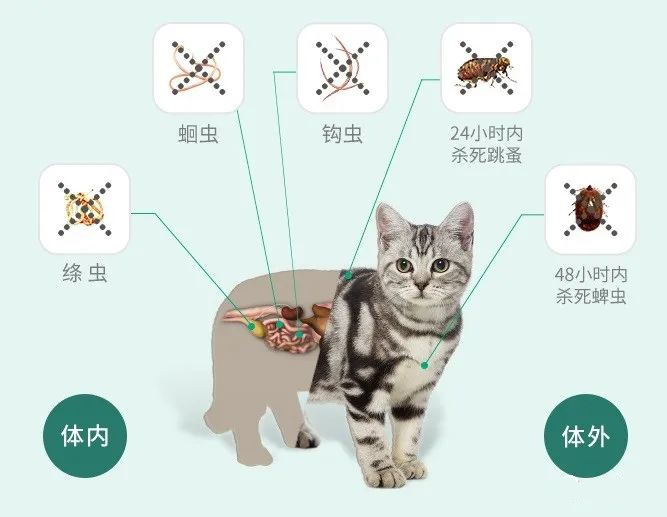Flowers bloom and worms revive in spring
This spring has come very early this year. The weather forecast of yesterday said that this spring was one month earlier, and daytime temperatures in many places in the south will soon stabilize above 20 degrees Celsius. Since the end of February, many friends have come to inquire about when to use extracorporeal insect repellents for pets?
As we explained earlier, whether a dog has ectoparasites is primarily determined by the environment in which it lives. The parasites that they can come into contact with on a daily basis include fleas, lice, ticks, scabies, demodex, mosquitoes, sandflies, and heartworm larvae (microfilaria) that are bitten by mosquitoes. Ear mites do ear cleaning every week, so normal dogs do not appear unless pet owners never do daily cleaning and maintenance.
We prioritize the prevention of these ectoparasites according to the severity they can cause to dogs: ticks, fleas, mosquitoes, lice, sandflies, and mites. Scabies and demodex mites in these insects are mainly transmitted through contact with dogs, and most domestic pets do not have them. If infected, pet owners will definitely know and start treatment. As long as they do not closely contact stray dogs outside, the probability of being infected is very low. Ticks can directly cause tick paralysis and Babesia, resulting in a high mortality rate; Fleas can spread some blood diseases and cause dermatitis; Mosquitoes are an accomplice in the transmission of heartworm larvae. If heartworm grows into adults, pet mortality can even exceed kidney failure. So insect repellent is the most important thing in pets’ daily life.
In vitro insect repellent standards for dogs
For some friends, I would suggest doing in vitro deworming every month throughout the year, while for other friends, we only do in vitro deworming when necessary due to cost saving reasons. What is the standard? The answer is simple: “Temperature.”.
The average temperature at which insects begin to move is around 11 degrees Celsius, and insects with temperatures above 11 degrees Celsius most of the day begin to come out to forage, suck blood, and reproduce. The daily weather forecast refers to the highest and lowest temperatures. We only need to take the median value of more than 11 degrees Celsius. If we are not accustomed to watching the weather forecast, we can also judge from the activity of surrounding animals. Are the ants on the surrounding land starting to move? Are there butterflies or bees in the flowers? Are there any flies around the garbage dump? Or have you seen mosquitoes at home? As long as any of the above points appear, it indicates that the temperature is already suitable for insects to live in, and pet parasites will also start to become active. Our pets also need to undergo in vitro insect repellency on a timely basis based on their surroundings.
It is for this reason that friends living in Hainan, Guangzhou, and Guangxi need to undergo external insect repellency for their pets almost all year round, while friends living in Jilin, Heilongjiang, often do not undergo insect repellency until April to May, and can end up in September. So when to use insect repellents, don’t listen to what others say, but look at the environment around your home.
In vitro insect repellent standards for cats
The extracorporeal insect repellent for cats is much more complex than for dogs. Some pet owners like to take cats out, which poses a huge challenge to cats, because cat insect repellents target far fewer types of insects than dogs. Even if the same drug is used on dogs, it may kill scabies mites, but may not be effective on cats. According to the instructions I consulted, it seems that there is only one insecticide that can be used against cat ticks, and the rest are ineffective. But Boraine is only targeted at fleas and ticks, and cannot cope with heartworms, so it is not very useful for cats who do not go out.
Previously, we wrote an article discussing how cats that don’t go out can infect internal parasites. However, cats that don’t go out have a much lower probability of contracting external parasites, and there are often only two channels: 1. They are brought back by dogs that go out, or they can be infected by fleas and lice by touching stray cats through a window screen; 2 is a heartworm larva (microfilaria) transmitted through mosquitoes in the home; So the parasites that real cats need to pay attention to are these two types.
For pet owners with good family conditions, it is best to regularly use the internal and external repellent AiWalker or Big Pet every month, which can almost 100% guarantee that they will not be infected. The only disadvantage is that the price is indeed relatively expensive. For friends who are not willing to spend too much money, it is also acceptable to do internal and external insect repellency with Aiwo Ke or Da Fai once every three months. If fleas are found to be killing insects with a temporary addition of Fulian, for example, once in January, once in April, once in May, then once again after May, once again after August, and once in September, Love Walker or a big pet once in December, such as three groups a year, each group for 4 months.
To sum up, observing the temperature of dogs and cats for external insect repellency can basically ensure that they do not worry about health problems caused by parasites.
Post time: Mar-27-2023



